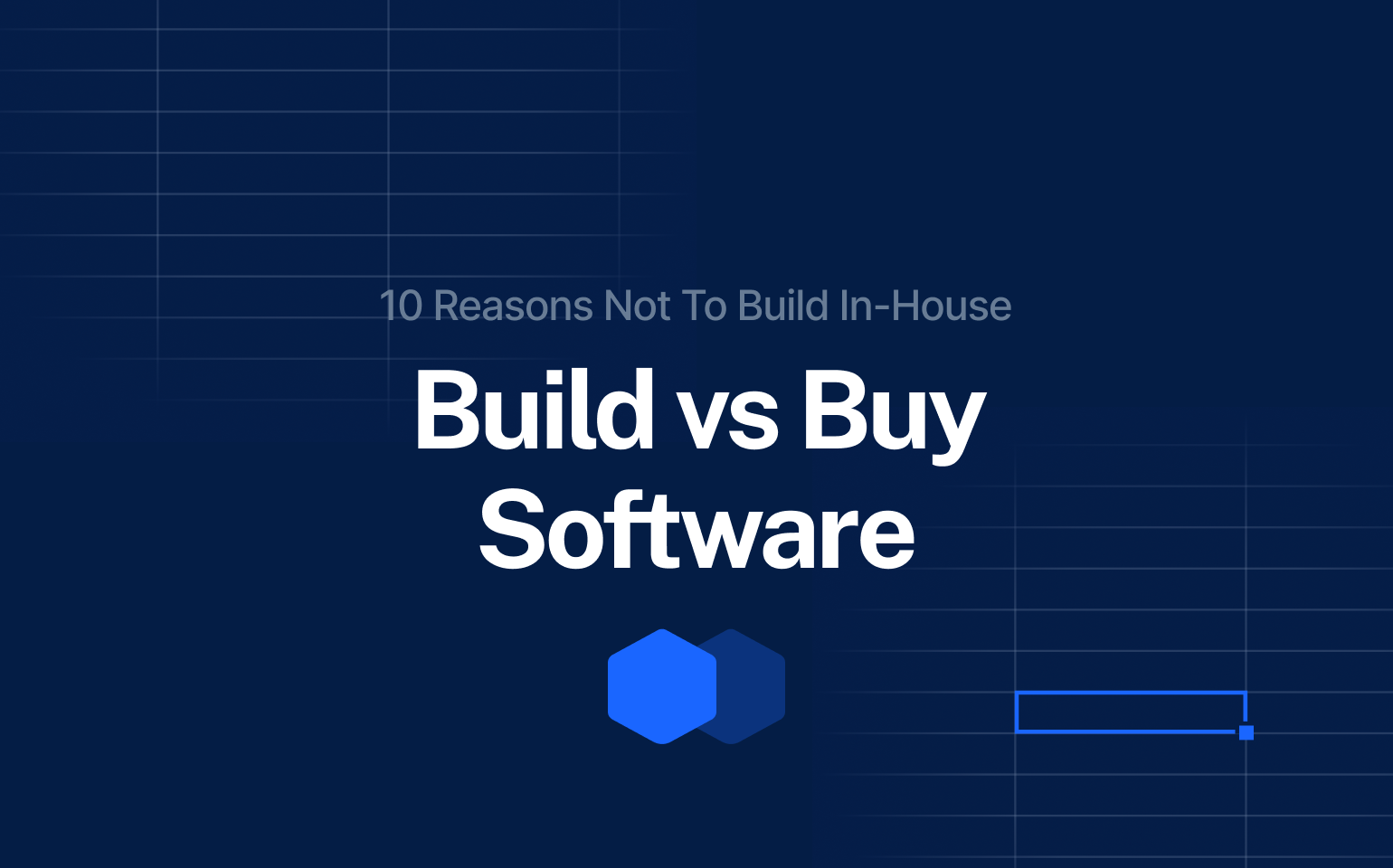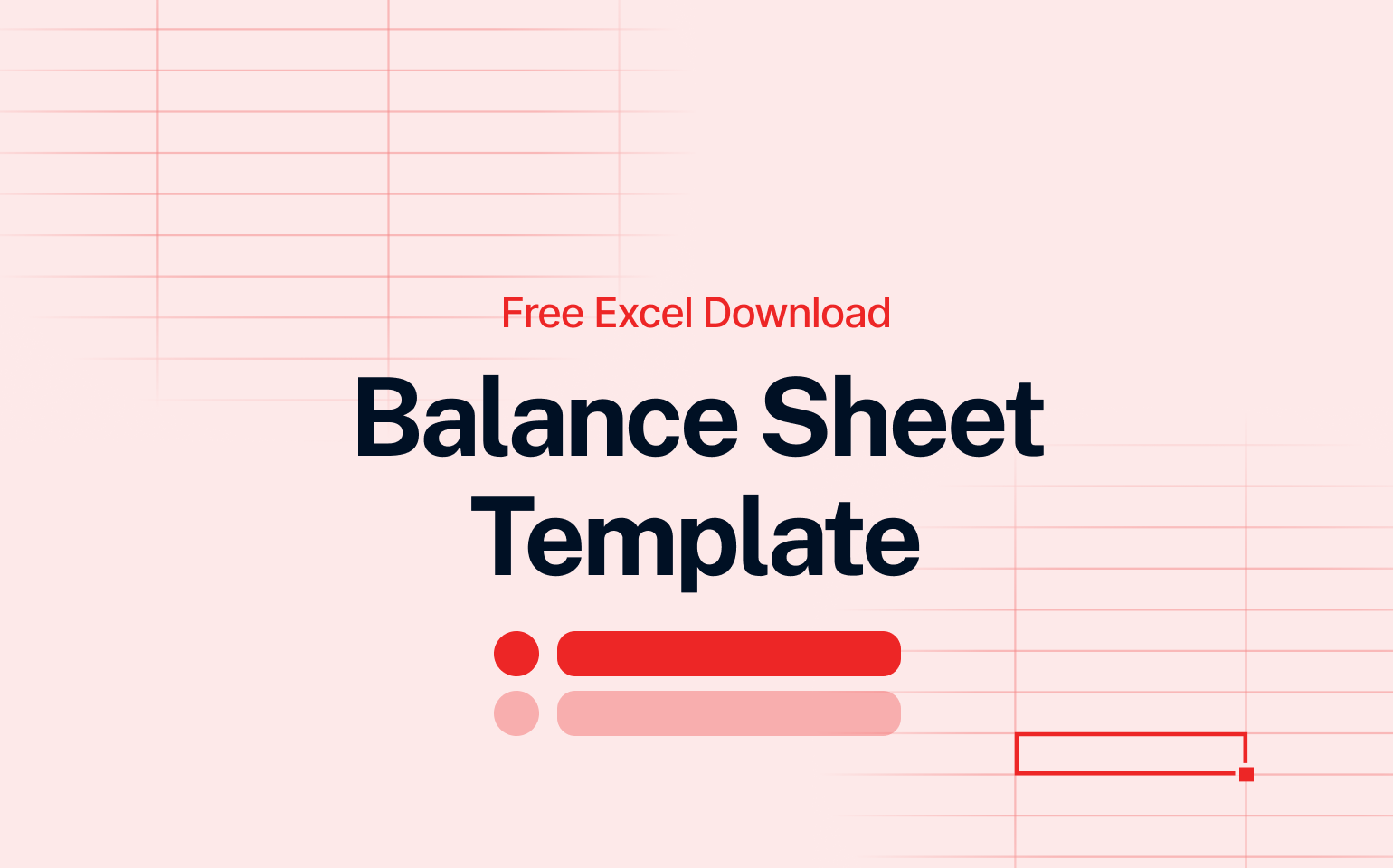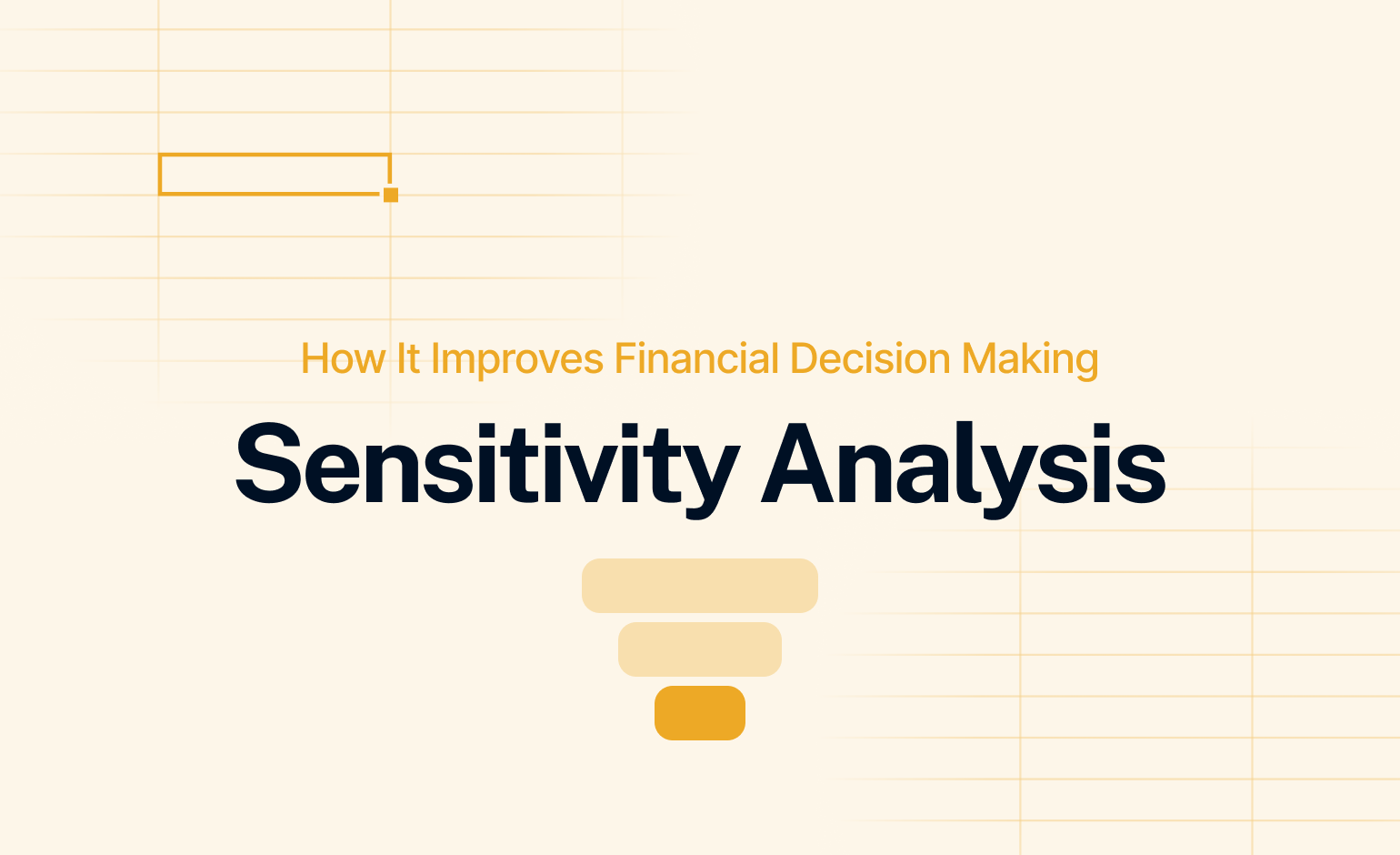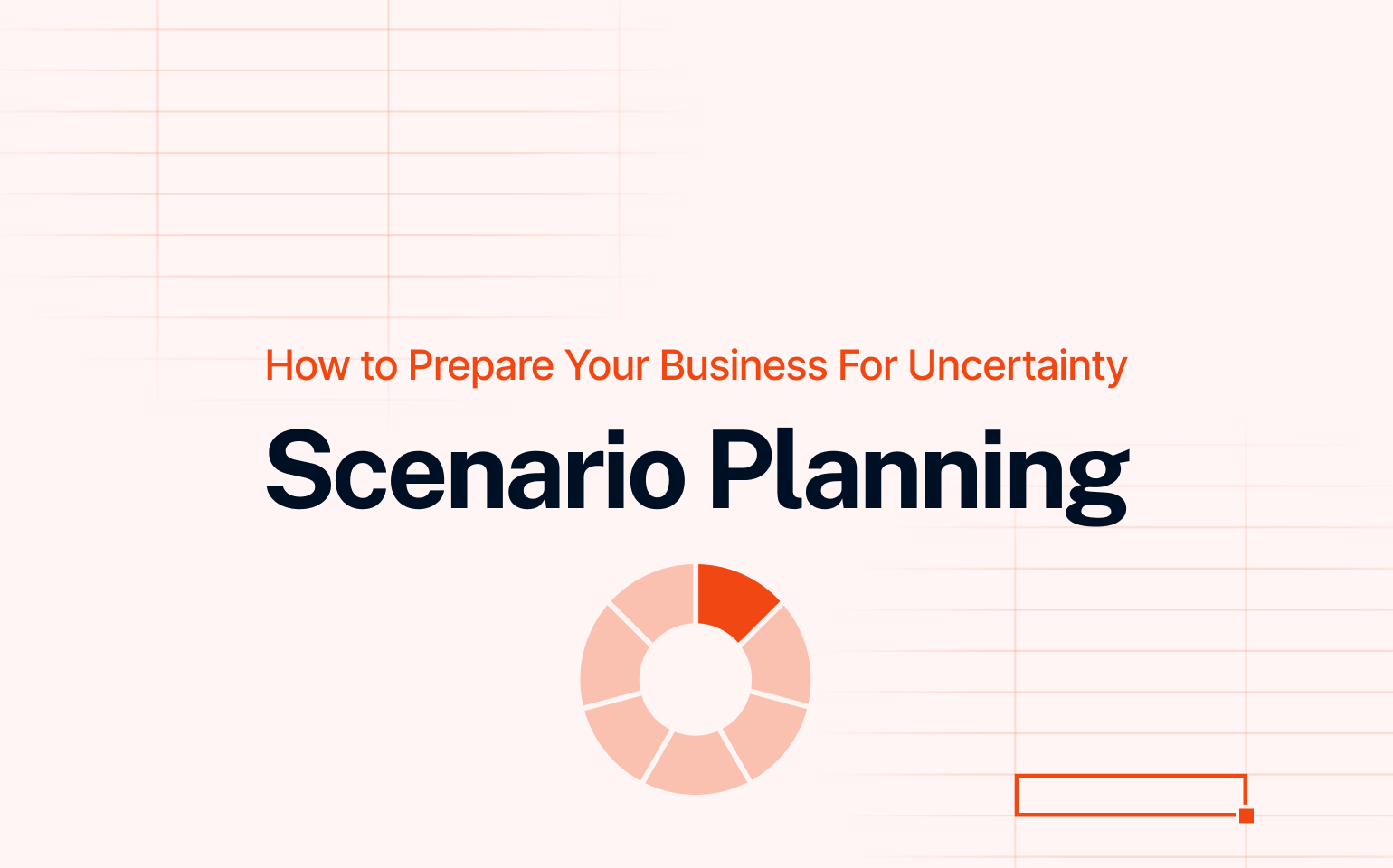The build vs buy software debate comes up every time a company hits a wall with spreadsheets or legacy tools. Building your own system sounds smart – you own the roadmap, skip vendor fees, and tailor it to your needs. But in reality? Most in-house software projects spiral into delays, high costs, and never-ending maintenance. Meanwhile, your competitors already have working tools – and they’re moving faster than you.
Most internal software projects take too long, cost too much, and don’t solve the real problem. While your team works on fixing bugs and chasing compliance, competitors move faster with off-the-shelf tools.
Read: FP&A Software – A Practical Guide for Finance Teams
This article breaks down ten clear reasons why building your own ERP, FP&A, or CRM system doesn’t make sense. If you’re making the build vs buy software decision, this will help you make the right call.
1. In-House Software = Scope and Complexity Spiral
Enterprise software needs to support finance, sales, HR, operations, and reporting. Building all of that in-house means recreating years of business logic from scratch. This is not just a project. It is a long-term product commitment.

Even experienced vendors with large teams and thousands of users take years to develop mature features. They still release updates every quarter. Expecting an internal team to match that pace rarely works out.
This is where most build vs buy software decisions fall apart. Hidden requirements like tax rules by country, audit trails, or multi-entity planning create delays and technical debt. Scope increases. Deadlines slip.
Many teams end up stuck with a custom tool that does not scale, costs too much to maintain, and never delivers what they expected.
2. Building Enterprise Software Costs More Than You Think
Building software in-house costs more than most teams expect. You will need developers, analysts, architects, QA, DevOps, and project managers. That is before the software even goes live.
After launch, costs keep rising. You need to fund support, upgrades, hosting, and feature requests. Each update takes time and pulls your team away from core business work.
Vendors spread these costs across hundreds of customers. You pay a fixed price for a product that is already built, tested, and secure.
If you’re comparing build vs buy software, remember that buying does not just save money – it also reduces the risk of falling behind on features, stability, and support.
3. You Wait Too Long to See Value

Building enterprise software takes time. Most in-house systems need months – or years – before they become usable. In the meantime, your teams still work in spreadsheets, outdated tools, or disconnected platforms that slow them down.
Buying software is faster. Most vendors have proven implementation processes and tools ready to go. You can be live in weeks, not quarters. Companies that move quickly also streamline budgeting and forecasting instead of wasting time with manual work and disconnected files.
Time matters. While your internal team is still designing basic features, competitors are already running reports, adjusting forecasts, and hitting their targets.
If speed to impact matters to you, the build vs buy software choice becomes simple. Buying gets you results sooner – and lets your team focus on what actually drives performance.
4. You Don’t Get Built-In Best Practices
Vendors usually build software by working with hundreds of companies. Over time, they learn what works and what doesn’t. They turn that knowledge into workflows, templates, and features that follow proven industry practices.
If you build your own software, your team starts from zero. You have to define every process yourself, without the benefit of what others have already figured out.
Good FP&A and ERP tools come with features based on real use, not guesswork. That includes planning logic, allocations, approval flows, and compliance checks.
When you compare build vs buy software, think about the value of using what’s already tested and trusted.
5. You Own the Risk if Something Breaks

Enterprise software handles sensitive financial and customer data. If your system isn’t secure, the risk is on you. That means building in strong access controls, encryption, audit logs, and tracking.
It also means meeting strict standards like SOC 2, ISO 27001, GDPR, and SOX. Getting certified takes time, money, and focus. Keeping that certification is even harder.
When you buy software, the vendor takes care of all of this. You get the features you need, and you stay compliant without hiring a security team.
If you build your own system, every risk falls on your team. That’s a big factor in the build vs buy software decision.
6. You’ll Struggle to Keep Everything Connected
Most companies use multiple systems to run their business. You’ve got ERP, CRM, HR, BI tools, and more. Your planning or reporting tool has to work with all of them. If it doesn’t, your data gets stuck in silos.
Connecting these systems takes time and money. You’ll need to build each integration, test it, monitor it, and fix it when something breaks. Your team will have to stay on top of every change.
Buyers don’t deal with this. Vendors usually offer ready-made connectors and reliable APIs.
If you build your own software, you take on all of this work. And it never really ends.
7. Your System Won’t Scale With the Business

It’s one thing to build a tool that works for today. It’s another to build one that still works when you double your users, expand to new markets, or add legal entities.
As your business grows, so do the demands on your software. You’ll need faster performance, better data handling, and features like real-time planning and multi-entity consolidation. That’s where most custom-built tools fall short.
Financial statement consolidation is a good example. What starts as a simple reporting task can quickly turn into a complex process that slows down monthly closes and clogs your planning cycle.
When you buy software, you get a system that’s already built to handle scale, without dragging your team into maintenance mode.
8. You’ll Always Be Playing Catch-Up
When you build software in-house, your team has to do everything. They fix bugs, answer support tickets, handle security issues, and maintain the codebase. That work comes first. Improvements, new features, and better user experience stay on the back burner.
Meanwhile, vendors keep improving their products. They release updates, add smarter tools, and make the software easier to use—based on feedback from hundreds of customers.
That gap grows over time. Your system falls behind while the tools you didn’t buy keep getting better. Things like what-if analysis are standard features in vendor software but often never make it into internal builds.
If staying competitive matters, the build vs buy software decision is also about how fast you can improve, not just what you need today.
9. You Rely Too Much on a Few People

Custom software usually depends on a handful of people who know how it works. If one of them leaves, the rest of the team is stuck. Even small changes can become big problems if the right person isn’t around.
Hiring and keeping people with the right skills is hard. Developers who understand finance, modeling, security, and integrations don’t come cheap. And if they leave, so does the knowledge.
When you buy software, you get full support and a team that’s built the product for years. You’re not at risk if someone quits.
If you build, you carry that risk every day. It’s another reason to think carefully about the build vs buy software decision.
10. You Waste Time on the Wrong Problem
Building software takes time. Every sprint your team spends designing features, fixing bugs, or managing updates is time they’re not spending on what actually moves the business forward.
You’re not in the software business. You’re in retail, pharma, logistics, or manufacturing. Your time should go to pricing, forecasting, supply chain, or margins – not system maintenance.
This is the core of the build vs buy software decision. If you buy, your team stays focused on strategy and results. If you build, they get pulled into support and fixes that don’t add value.
That trade-off is real, and it costs more than most teams expect.
Ask Yourself the Right Questions Before You Build
Still not sure whether to build or buy? Run through this list. Be honest about what your team can handle.
- Do we have a product and engineering team with capacity to take this on?
- Can we go live in under 6 months?
- Do we need something truly unique, or can we adapt a proven solution?
- Can we meet all compliance and security standards from day one?
- Can we build and maintain integrations with all other systems we rely on?
- Do we have a plan to support, improve, and scale this over time?
If you answered “no” to most of these, the decision is clear.
The build vs buy software question is not just about what you need. It’s about what you can realistically deliver and support.
Conclusion
Building software can seem like a smart way to stay in control. But when you look at the time, cost, and risk, the trade-off is hard to ignore.
This isn’t just about getting a new tool. It’s about how your team spends its time and what you can support long term.
Buying purpose-built software helps you move faster, stay secure, and focus on real business priorities.
If you’re still deciding on the build vs buy software question, be honest about what your team can take on – and what’s better left to experts.



